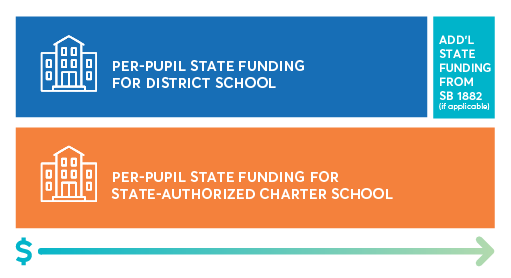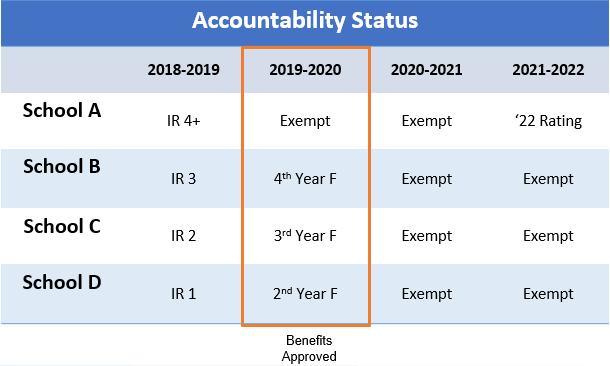About Texas Partnerships
Key Components of Texas Partnerships
- District authorizes the partner to operate an in-district charter school
- The partner manages the district school and is responsible for outcomes
- The partner has autonomy over personnel, time, budget, and academic program
- The district school board and staff hold partners accountable through performance contract
Texas Partnership Benefits
The state Legislature signed SB 1882 into law in 2017. The bill encourages districts to use these partnerships to improve student outcomes by offering two new benefits; Approved partnerships may receive additional state funding for the partnership school, and schools with an unacceptable accountability rating are eligible to receive a two-year exemption from specific accountability interventions.
Additional Funding
District can determine an estimate of the potential additional funding using the Texas Partnership Funding Calculator.
Accountability Exemption
Approved partnership schools with an unacceptable state accountability rating receive a two-year exemption from specific accountability-related interventions to allow the partnership time to improve academic performance.
For schools in with a 1st, 2nd, or 3rd consecutive unacceptable rating, the exemption begins the academic year after the school seeks approval for partnership benefits.
For schools with four or more consecutive unaccpetable ratings, the accountability intervention exemption begins in the current school year.
Application Process
Districts interested in launching and seeking the benefits of a Texas Partnership School must complete two steps. First, the district must recruit, select, and authorize a new or existing Texas partner to operate an innovation or turnaround school. Then, the district must apply to the state on behalf of the partnership school for partnership benefits.
Step 1: District Authorizes the Partnership
Learn more about developing a strong partnership.
Step 2: District Applies for Partnership Benefits
Learn more about the application and approval process.
Types of Partnership Schools
There are two kinds of partnership schools. Turnaround Partnership schools include schools that received an unacceptable rating the year prior to becoming a partnership school. In contrast, Innovation Partnership schools include existing district schools that received an acceptable rating the year prior to becoming a partnership school and newly launched schools with a new county district campus number (including early childhood programs serving PK3).
Innovation Partnership Schools
Existing schools that were not unacceptable in the prior year and new schools, defined as new campuses for state reporting and must receive a new county district campus number (CDCN).
Turnaround Partnership Schools
The school received an unacceptable rating for the prior school year.
Types of Partners
Existing Texas Partners
- State or district-authorized charter operators
- Partner must have at least three years of experience operating a charter school in Texas
- Partner must have acceptable academic and financial performance in each of the three preceding school years
- Neither the partner organization, nor the key individuals involved, may be associated with a revoked charter
New Texas Partners
- Existing state or district-authorized charter operators with less than a three-year track record
- Out-of-state charter operators
- Institutes of higher education
- Governmental entities
- Other non-profits




